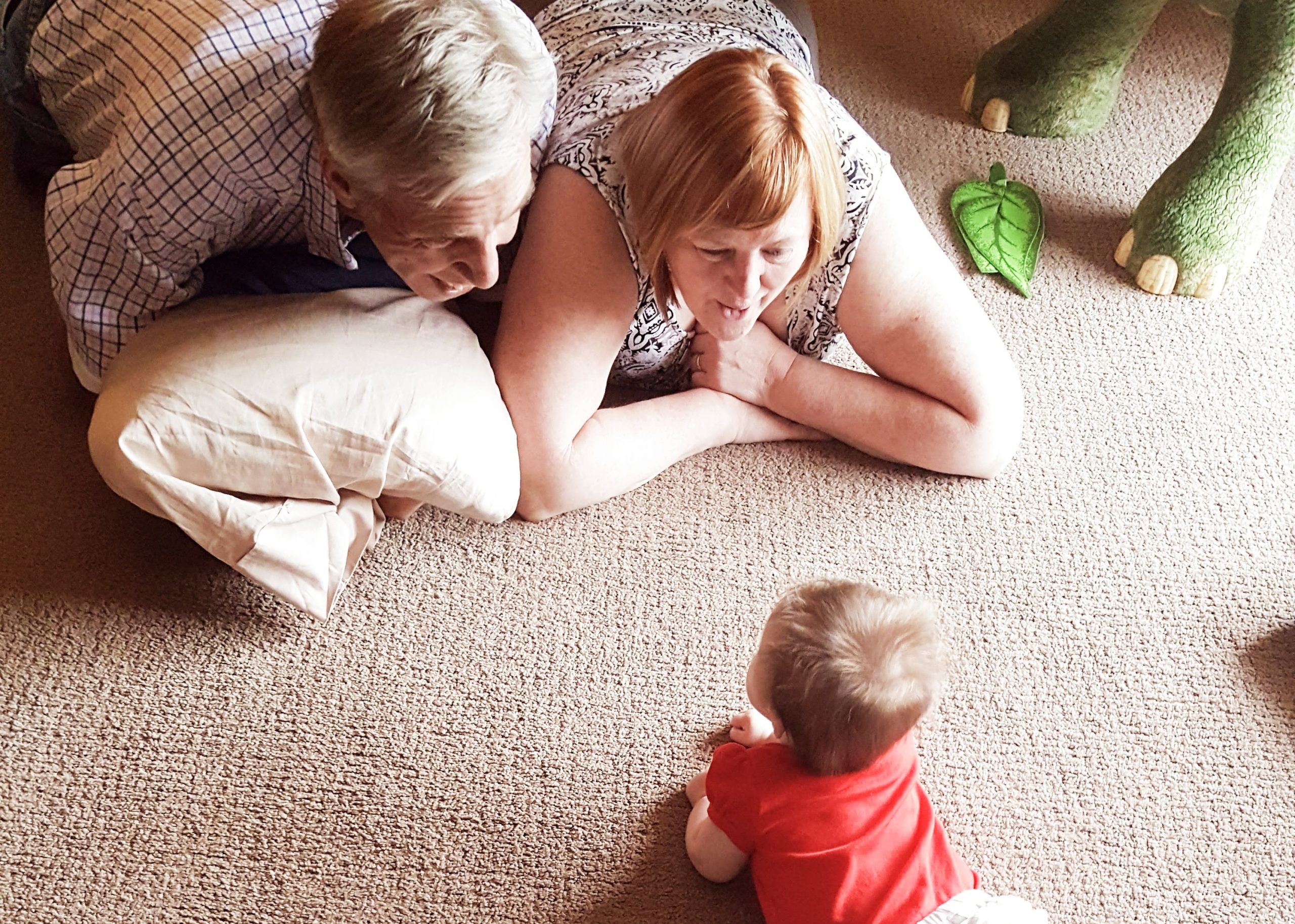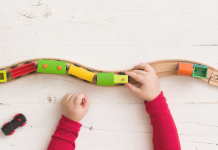Sometimes being a new parent is harder than you expected. There you are, cuddling and consoling your screaming baby after scooping them up from their last tummy time session. You begin to wonder if you are doing something wrong and question yourself. “Should I have started tummy time earlier?” “Is something wrong with my baby?” “Why do I even need to do tummy time?” The questions pile up and suddenly what you thought was going to be an opportunity for you to play with your baby becomes the most stressful part of your day. You feel exasperated and begin to think about how much your baby hates tummy time.
Maybe you were told by your doctor that your child needed 30 minutes of tummy time every day, but one minute is all they can stand. Or, maybe you were excited to start floor playtime, which ended up with you both dissolving into tears. Maybe you are worried that your baby’s head is beginning to flatten as the characteristic loss of hair along the back is noticeable as of late.

However you landed here, I bet you are wondering and questioning how to get your baby to enjoy tummy time. If you are curious about why it is important, check out this video playlist from Pathways.org. It has some fantastic explanations and instructional videos.
8 Strategies to Create a Tummy Time Rockstar
I’ve compiled my favorite, tried and true, happy tummy time tips. These tips have worked with numerous families I’ve coached in my 12 years working with infants and toddlers and have been tested out on my own babies.
1. Any position out of baby equipment where baby is not lying flat on their back counts towards “Tummy Time.”
Put that baby in a carrier and wear them! Hold your baby and dance with them, allowing them to begin to shift their weight as your change positions. The more of their awake time out of baby equipment, the better.
However, when you find yourself in need of a break, a hot shower, a chance to get the dishes done—let go of the mom guilt and place your baby in a safe spot that will keep them soothed while you take 15 minutes for your sanity.
2. Start tummy time with the baby on you.
Put your baby up on your shoulder to burp them. Lay back in a recliner and put baby on your chest as you talk sweetly to them. Lay a fussy baby across your lap face down and gently pat. Put a colicky baby over your arm (in football hold) gently shushing as you walk the house. Your young baby will be most regulated when they are able to touch your body, feel your heartbeat, have your scent close, and hear your soothing voice.
3. Gradually incorporate floor time.
I always begin babies on their backs. Place your infant on their back and engage them by talking, reading, smiling to ensure the experience is pleasant. Next. slowly roll your child to their side and play in this position. Finally, help them roll to their tummy. Spend a few minutes in this position and, when your baby tells you they are done, roll them to their back before picking them up for a cuddle. Take it slow, your baby will appreciate the slower pace that comes with transitioning them to their stomach rather than simply planting them face down. These transitional movements are essential as your child begins to move independently later on.
4. Keep a hand on your child’s bottom.
Placing your hand on their bottom will help them manage the weight of their head as they begin to learn to pick it up and look left to right. Patting gently and firmly on their bottom can also help soothe them and extend your child’s tolerance for floor time.
5. Encourage arms forward to start.
Try laying on your tummy with your arms behind you and attempt to lift your head…is it comfortable? No. Having their arms forward makes a huge difference. I like to gently squish their arms together under their chin, this will help them begin to raise their head up nice and high. Eventually, your baby will begin to weight bear on their forearms and then push up with their arms extended. As they begin to become more coordinated, most babies will alternate between propping themselves up and using swimmer-like motions to prepare for crawling.
6. Frequent small increments add up.
You do not need to try and work up to 30 minutes of sustained tummy time. Instead, focus on making your baby enjoy and feel comfortable with floor time in smaller doses. Think of it as though your baby is getting their “steps in.” We don’t wake up and hope to have all of our 10,000 steps a day mastered in the first hour—we work towards it all day long. Spread out your doses of floor time and you will make it more pleasant and develop a habit for you to commit to.
7. Consider using tools to help positioning.
You could place your child over a Boppy, but I greatly prefer using a rolled up receiving blanket for young babies. Roll up the blanket and tuck it under their arms. If your baby seems extra fussy, you could try tummy time on an exercise ball. Hold onto your child as you slowly rock or bounce them on the ball.
8. Most importantly, keep it playful.
You want your baby to learn to enjoy floor time. Singing is a great way to catch their attention and help calm them down. Providing interesting visuals to look at like a black and white book stood up in front of them. Lay down and face your baby or try laying your infant on a textured play mat.

When to Get Help and How
If you’ve tried these tips and things still aren’t clicking for your little one, take a pause and consider if you’d like to reach out to your local early intervention team for support or an evaluation. Red flags related to tummy time that I would encourage referrals for include:
- Not meeting milestones
- Preference to look one way more than another (Torticollis)
- Significant flattening of the head (Plagiocephaly)
- No progress after increased opportunities
In Michigan, anyone can make a referral to Early On to receive a free developmental evaluation and become connected with an early intervention team for support if eligible. Parents do not have to wait for your doctor to refer.










